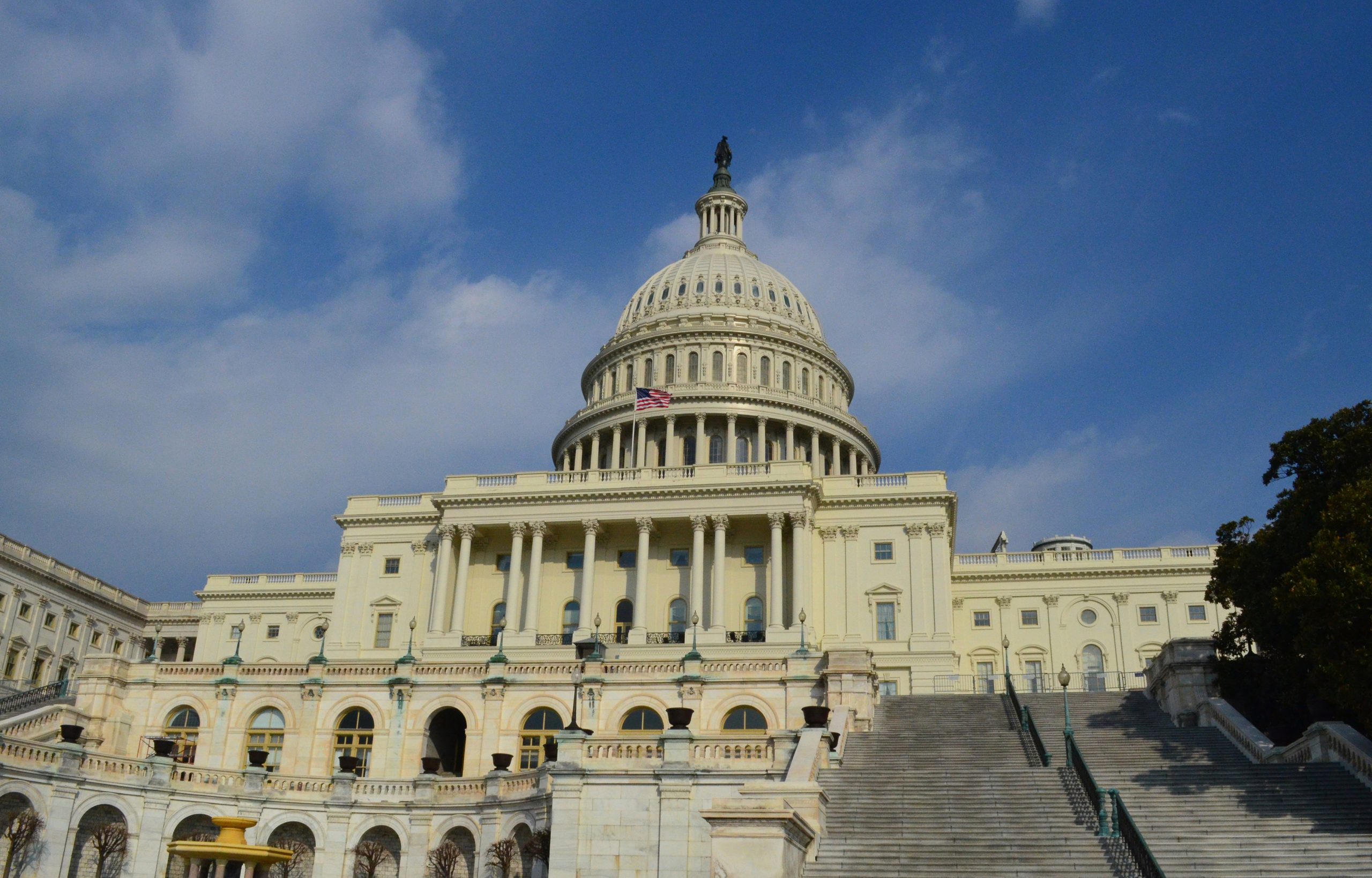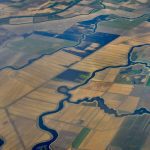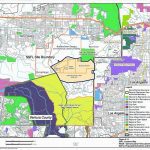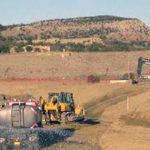- New law keeps federal agencies at 2025 funding levels through January 30, 2026.
- Existing Bureau of Reclamation and Colorado River programs continue without interruption.
- Rural water and wastewater loans and grants receive hundreds of millions of dollars.
- Watershed and irrigation modernization projects get dedicated funding.
- California’s Bay-Delta restoration authorization increases.
Wednesday, November 19, 2025 — On November 12, 2025, the President signed H.R. 5371 into law as Public Law 119-37
into law as Public Law 119-37 . The legislation combines a short-term funding extension with full-year appropriations for agriculture and several other federal areas. For the seven Colorado River Basin states, the law primarily maintains the status quo for federal water programs while channeling additional support to rural water systems, watershed improvements, and small community infrastructure.
. The legislation combines a short-term funding extension with full-year appropriations for agriculture and several other federal areas. For the seven Colorado River Basin states, the law primarily maintains the status quo for federal water programs while channeling additional support to rural water systems, watershed improvements, and small community infrastructure.
Division A of the law extends fiscal year 2025 funding for most federal agencies, using the prior year’s appropriations as the baseline. The legislation carries forward the funding rate and program conditions for any project that was active in 2025 and not otherwise modified in the new act. Under this provision, the Department of the Interior and the Bureau of Reclamation continue operating with the same resources that supported Colorado River work during fiscal year 2025.
Section 106 establishes January 30, 2026 as the expiration date for this continuing funding unless Congress enacts full-year appropriations sooner. This maintains stability for Colorado River operations, drought response programs, and ongoing infrastructure work during a period when long-term river management decisions are still under negotiation.
The law discourages agencies from initiating brand-new projects not previously funded. It directs departments to take only the most limited actions necessary to keep programs active, ensuring that Congress retains flexibility to set long-term funding levels later in the fiscal year.
discourages agencies from initiating brand-new projects not previously funded. It directs departments to take only the most limited actions necessary to keep programs active, ensuring that Congress retains flexibility to set long-term funding levels later in the fiscal year.
Rural Water and Wastewater Funding for Western Communities.
One of the largest and most detailed water sections in the new law appears in Division B, which provides significant resources for rural drinking water, wastewater infrastructure, and solid waste management.
The Rural Water and Waste Disposal Program receives direct loan authority and guaranteed loan authority totaling more than one billion dollars. In addition, the law appropriates more than four hundred million dollars for the cost of loans, loan guarantees, and grants for rural water and waste systems, with the funds remaining available until expended.
Congress further directs specific allocations for:
-
Direct water and waste loans, including one-percent loans for distressed communities.
-
Rural utilities programs that help households install or repair decentralized wastewater systems.
-
Additional grants under section 306A of the Consolidated Farm and Rural Development Act.
-
Sixty million dollars in loans and grants for water and waste disposal systems that may serve federally recognized tribes and the Department of Hawaiian Home Lands.
-
Thirty-five million dollars in technical assistance grants, including support for multistate nonprofit organizations that work with small communities on system planning and operations.
These programs support rural towns, tribal nations, and unincorporated communities across the Colorado River Basin states, where many systems require federal assistance to upgrade water treatment, aging pipelines, and wastewater facilities. The emphasis on technical assistance reflects a continued recognition that smaller entities often lack engineering and financial staffing needed to manage complex infrastructure projects.
Watershed Projects and Irrigation Modernization.
The law also provides funding for watershed planning and infrastructure administered by the Natural Resources Conservation Service.
Under the Watershed and Flood Prevention Operations account, the legislation allocates fifty million dollars for surveys, engineering, flood protection work, and land-use changes intended to improve watershed conditions. A statutory limit allowing projects only in watersheds smaller than 250,000 acres applies only when the primary purpose is flood prevention. For other purposes, larger watershed projects remain eligible.
Ten million dollars is set aside specifically for multi-benefit irrigation modernization projects that increase fish and wildlife habitat, reduce drought impacts, improve water quality or instream flow, or support off-channel renewable energy production. These types of upgrades are common throughout the West, where irrigation districts continue to modernize canals, pipelines, and distribution systems to conserve water and improve ecological outcomes.
The law also provides three million dollars for the Watershed Rehabilitation Program, which helps communities address aging dams, flood-control structures, and similar features originally built under older federal watershed authorities.
Calfed Bay-Delta Authorization Increased.
The legislation revises the funding language in the Calfed Bay-Delta Authorization Act by raising one of its authorization levels from thirty million dollars to thirty-two million six hundred thousand dollars. Although this program focuses on the Sacramento–San Joaquin Delta rather than the Colorado River, changes to California’s water system influence how the state balances its intrastate supplies with its reliance on the Colorado River.
Wildland Fire Funding With Watershed Implications.
Wildland fire management accounts for both the Department of the Interior and the Forest Service receive apportionment flexibility that allows funding up to the amount needed for wildfire suppression. Large fires in Western headwaters affect sedimentation, debris flows, and post-fire water quality. While the law does not explicitly address watershed recovery, continued capacity for fire response helps reduce long-term impacts on water sources.
What the Law Does Not Change for the Colorado River.
H.R. 5371 does not alter any of the legal frameworks governing the Colorado River, including shortage rules, interstate agreements, or the ongoing development of post-2026 operating guidelines. Those issues remain separate from the appropriations process and continue under federal rulemaking and interstate negotiation.
The new law simply ensures continuity in funding, drawing from fiscal year 2025 levels, while Congress continues debating more comprehensive fiscal year 2026 appropriations and the basin continues negotiating its future management framework.
Practical Implications for the Seven Colorado River Basin States.
-
Federal support for existing Colorado River programs remains uninterrupted through at least January 30, 2026.
-
Agencies must avoid initiating new projects that did not receive funding in fiscal year 2025.
-
Rural communities and tribal nations gain access to significant loan and grant support for water and wastewater infrastructure.
-
Irrigation districts and conservation groups have opportunities to pursue multi-benefit modernization projects.
-
Long-term river management remains dependent on ongoing negotiations separate from this appropriations law.
Frequently Asked Questions
1. What does Public Law 119-37 do?
It provides temporary government funding through January 30, 2026 while also enacting full-year appropriations for agriculture and certain other federal functions. It keeps water-focused agencies operating at fiscal year 2025 levels.
2. Does this law create new programs for the Colorado River?
No. It continues existing federal programs and resources but does not establish new Colorado River-specific programs or modify existing river management rules.
3. Who administers the water funding in this law?
The Department of the Interior and the Bureau of Reclamation continue their operations under prior-year appropriations, while the United States Department of Agriculture manages rural water, wastewater, and technical assistance programs. The Natural Resources Conservation Service administers watershed and irrigation modernization funding.
4. How long does the continuing resolution last?
The temporary funding extension remains in effect until the earliest of three events: the enactment of a full appropriation for a given agency, the omission of that agency in a subsequent law, or January 30, 2026.
5. Who is eligible for rural water funding?
Rural municipalities, counties, special districts, nonprofit organizations, and federally recognized tribes may apply for loans and grants under the Consolidated Farm and Rural Development Act, subject to program requirements.
6. Does this law affect current negotiations over post-2026 Colorado River operations?
No. Those negotiations are occurring independently and are not addressed in this appropriations measure.
Author’s Note.
This article was generated with the assistance of OpenAI in analyzing the text of H.R. 5371 and summarizing its water-related provisions.





